Visualizing future scenarios to support people and nature in Vancouver
Imagine mapping the ecology of Vancouver through the eyes of nature-loving humans who actively care for the land, water and beings. Ecotone was delighted to participate and contribute to a series of collaborative workshops organized by the City of Vancouver. Over the course of several workshops starting March 2023, we represented the Native Bee Society of BC and the GRIN (Green Roof Infrastructure Network), along with GRIN’s president, Dr. Kathy Dunster. The workshops were enriched and grounded by Leona Brown, an Indigenous Advocate and Cultural Programmer.
The coolest workshop took place on a Saturday in November, when a team of PhD researchers from Dr. Kai Chan’s lab at the UBC Institute for Resources, Environment and Sustainability (IRES) facilitated a workshop to generate visuals and data. The study, “Co-constructing a mutualistic city: Envisioning future scenarios to support people and nature in urban landscapes” enlisted graphic recorders to capture both essence and details of the trans-disciplinary conversations they facilitated.
Nerdy conversations graphically recorded
It’s amazing what can happen when passionate humans with different points of view and expertise put their heads and hearts together. This graphic acknowledges most of the participants, and gives a sense of the perspectives and passions represented.
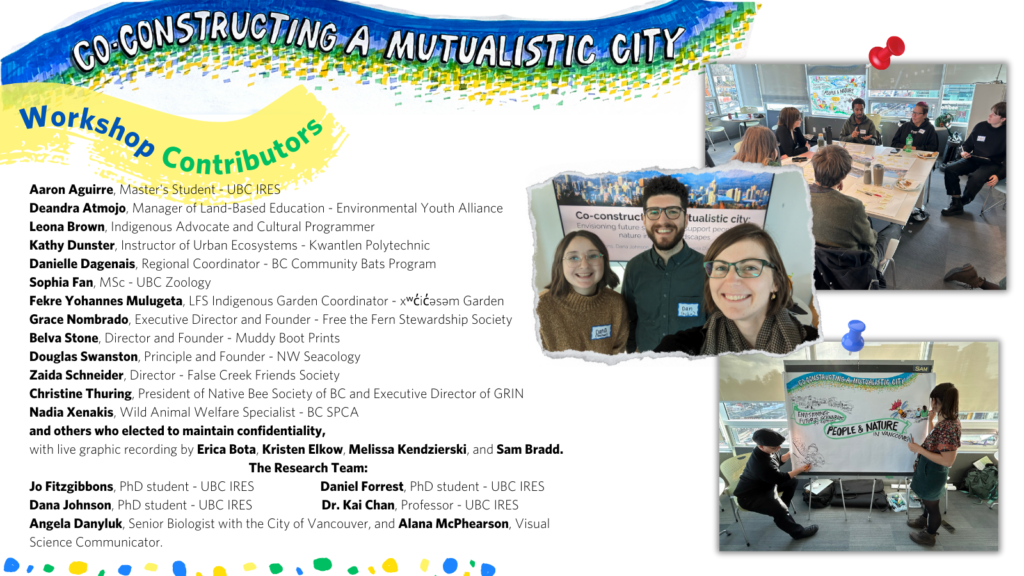
The study has three driving questions:
- How do diverse knowledge holders characterize and value the social-ecological system(s) of Vancouver?
- What can we learn from diverse knowledge holders about Vancouver’s urban ecosystems – what’s in
them, how they work, and what they need to thrive? - How can we engage diverse knowledge holders in ways that are just and respectful of unique
perspectives and ways of knowing?
Most brilliant was how our conversations were visually captured! Participants were divided into four focus groups – Residential, Industrial, Coastal, and Diversity – each assigned with a proficient artist from Drawing Change to visually convey the conversation. Graphic recorders captured everything on large, colourful, informative panels.
The conversations were nerdy to the highest standard, with much trans-disciplinary learning and appreciation. The graphics that follow communicate these shared explorations, and knowledge, of urban social-ecological systems. Can you find the native bees and green roofs in each? We love how they dance with the other elements!
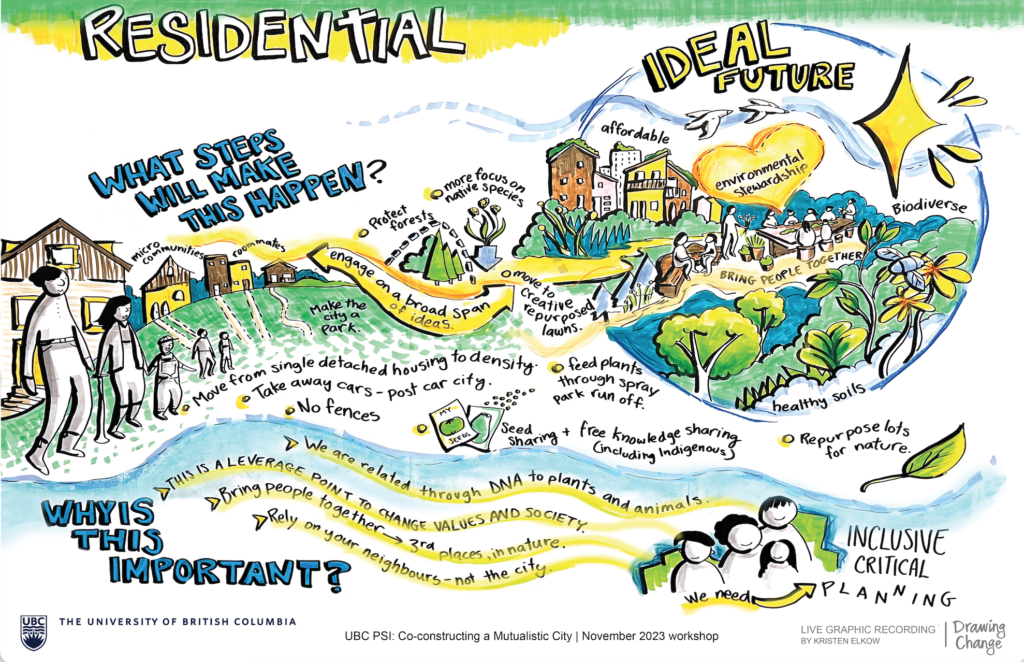
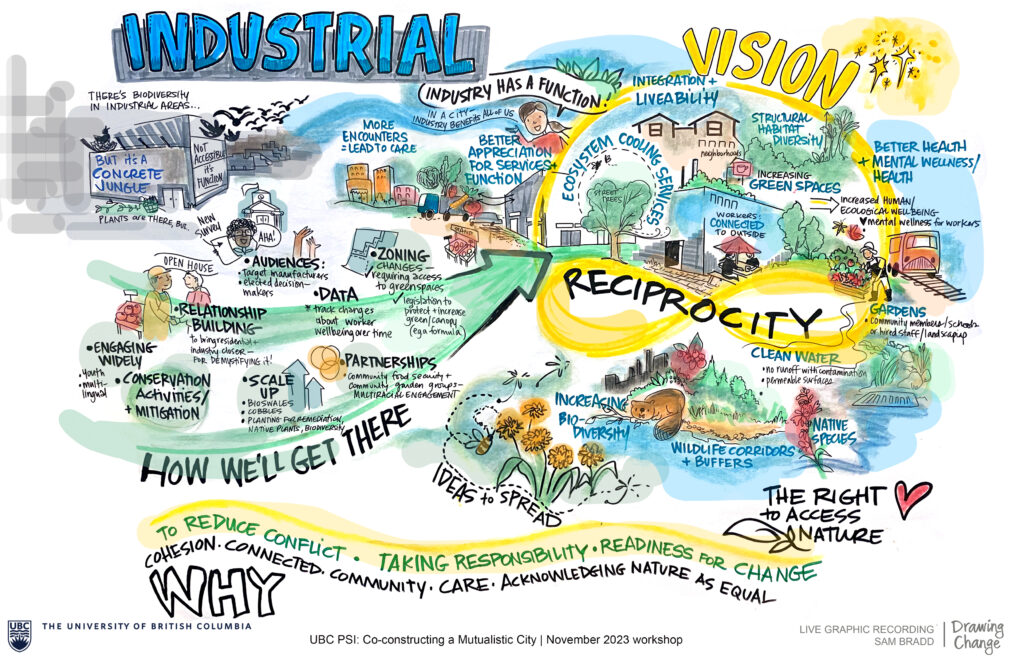
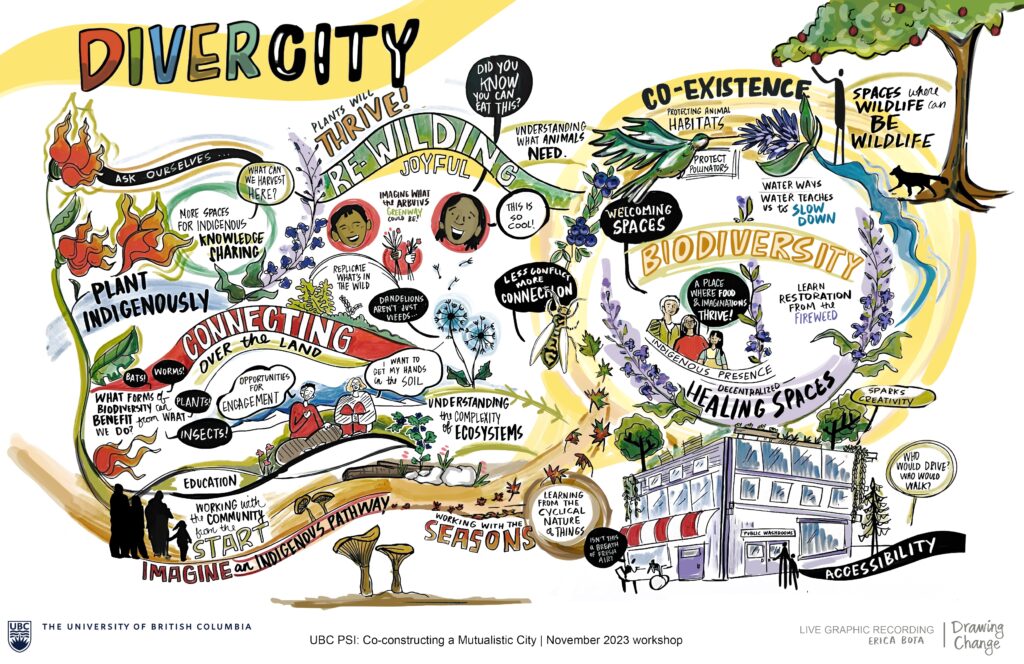
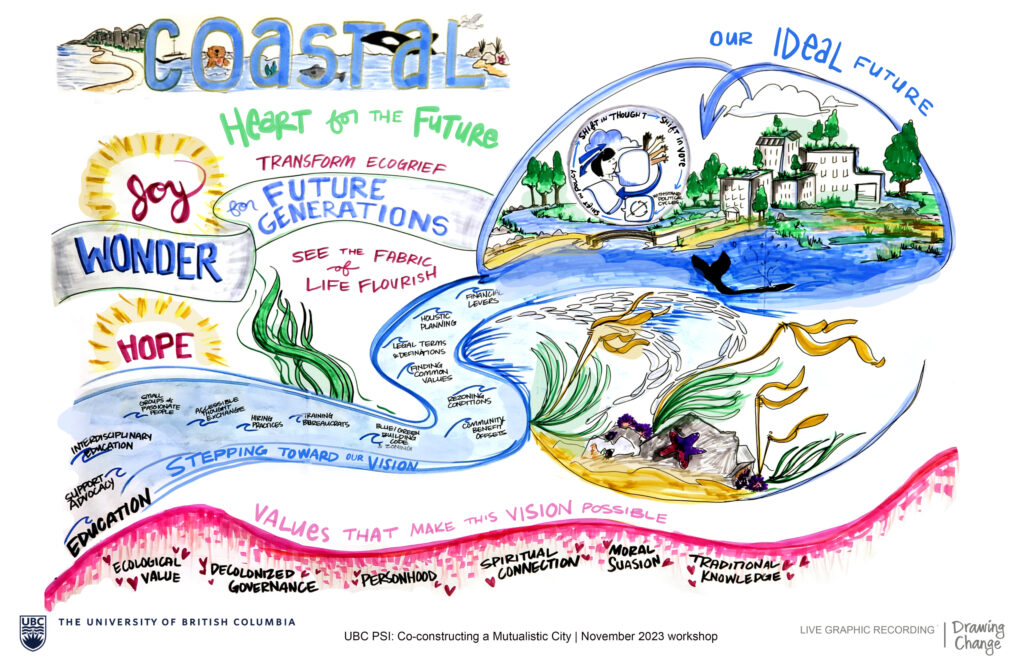
We are grateful to have been able to participate, and to express the needs of native bees and the place of green roofs in our cities. Certainly mainly voices were missing, yet the diversity assembled was quite good. We’re happy to share more about this project/ experience, so don’t hesitate to get in touch via email or in the comments section.
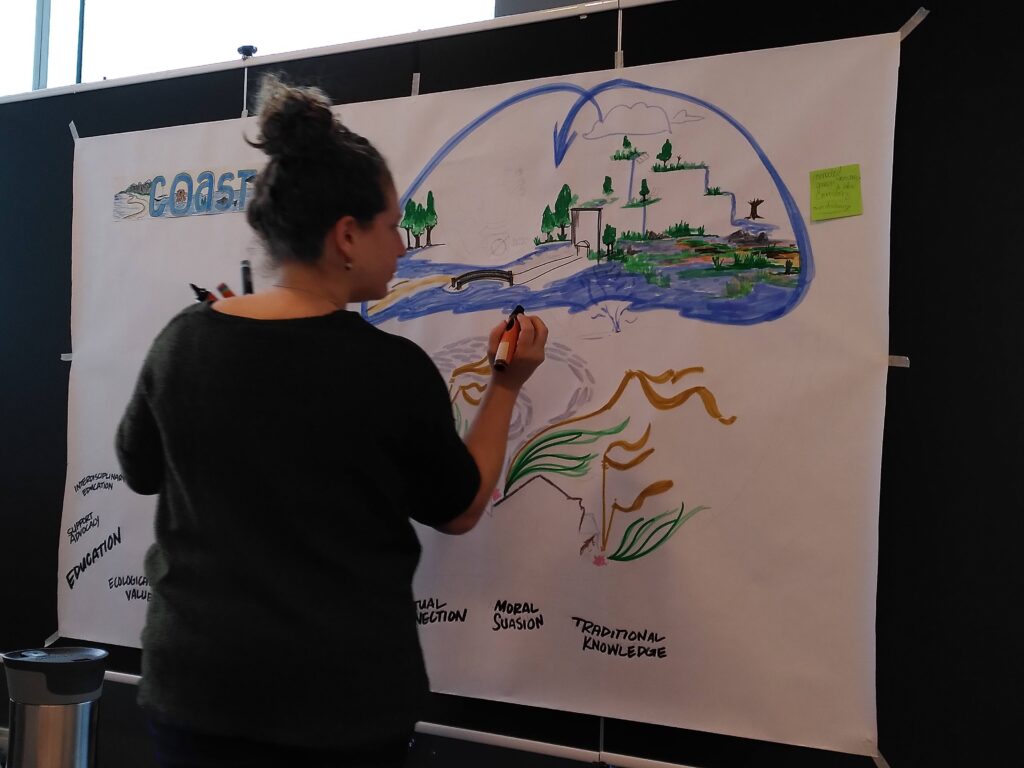
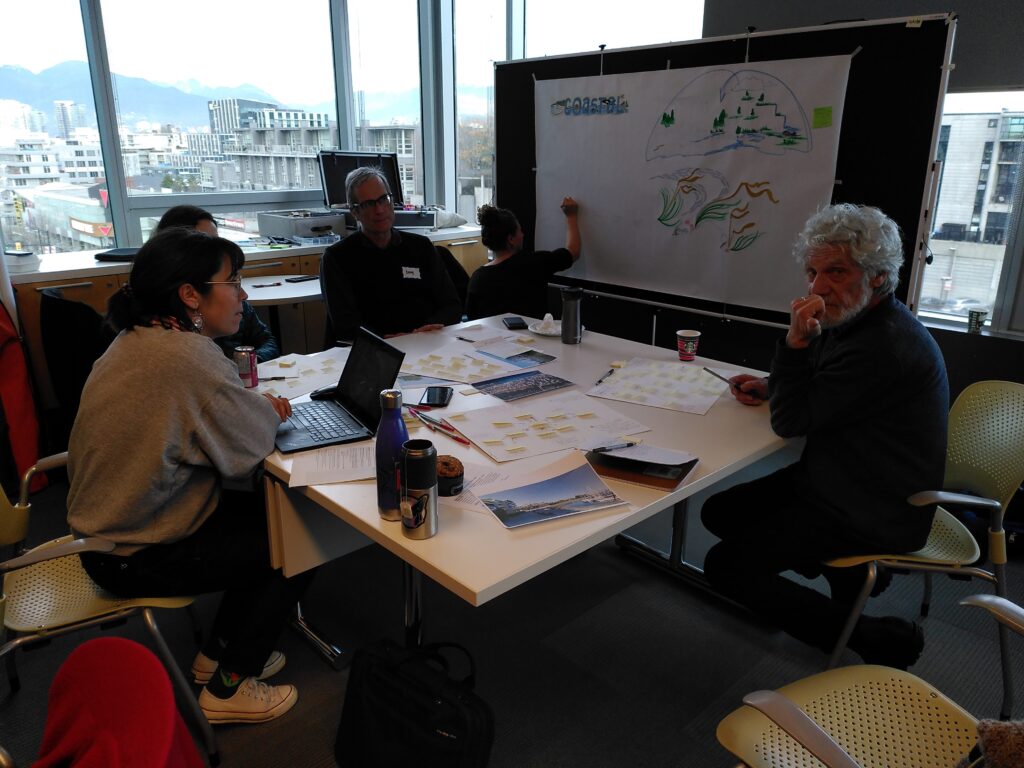
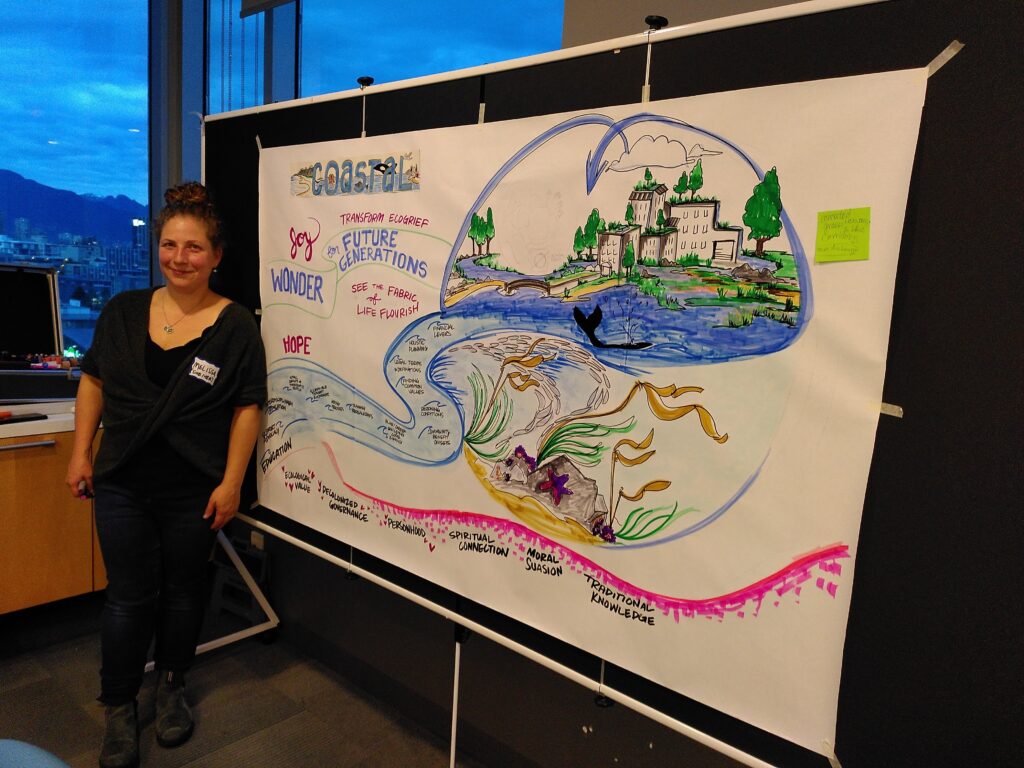
Kudos to the CHANS lab for this important work, and to Drawing Change for their astute and creative interpretations. The day was skilfully run by a team of PhD students, who will analyze, interpret and write about and data generated by our conversations, to be published in peer-reviewed journals and as chapters in student dissertations (the latter will be available to view open-access and online via UBC’s institutional repository: https://circle.ubc.ca/).
Study name: Co-constructing a mutualistic city: Envisioning future scenarios to support people and nature in urban landscapes.
Objectives:
● Support, inform and guide ongoing planning and policy making efforts by synthesizing knowledge
from diverse actors;
● Build a shared understanding of the effects of and interactions among governance interventions,
urban nature, and nature’s contributions to people.
● Communicate these findings in a visually rich, implementation-oriented, digestible format.
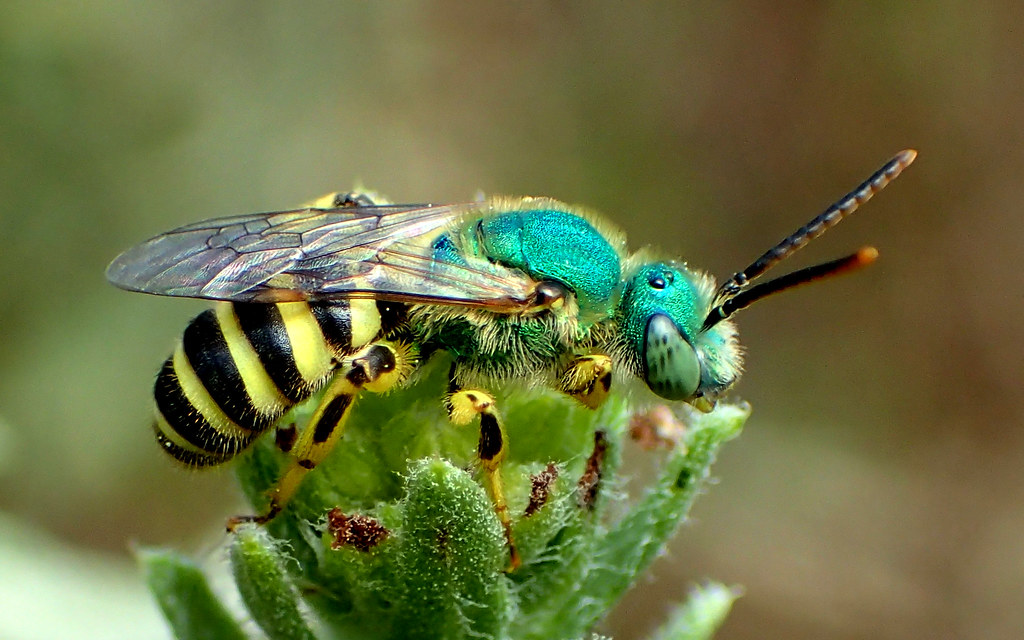
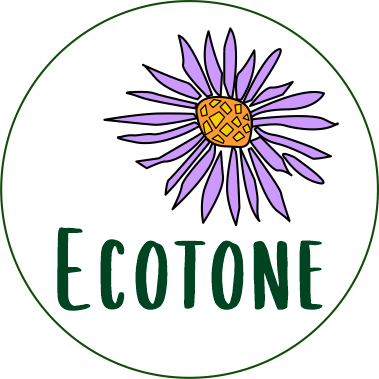
4 thoughts on “Visualizing 4 future scenarios that support people and nature”
Love this idea!!
It is fantastic, isn’t it? We felt inspired to share, and to celebrate this approach. Thanks for your comment, Laura!
Christine, so glad you have posted this!
We have engaged Drawing Change for a stake and rights holders confab and very excited they have agreed to document the event. Hope to see you there!
Wonderful, Zaida, I’d come just for the drawings and experience! Please remind me of the date and event? If it’s open to the public, feel free to share below!